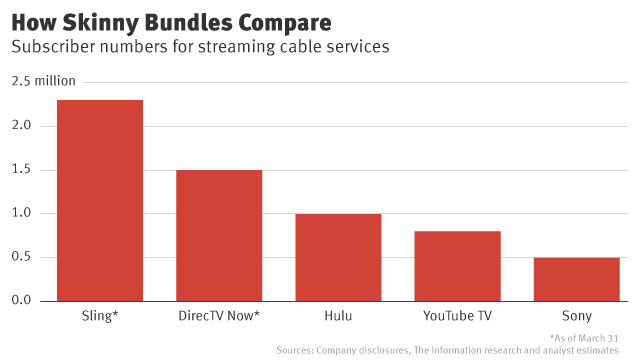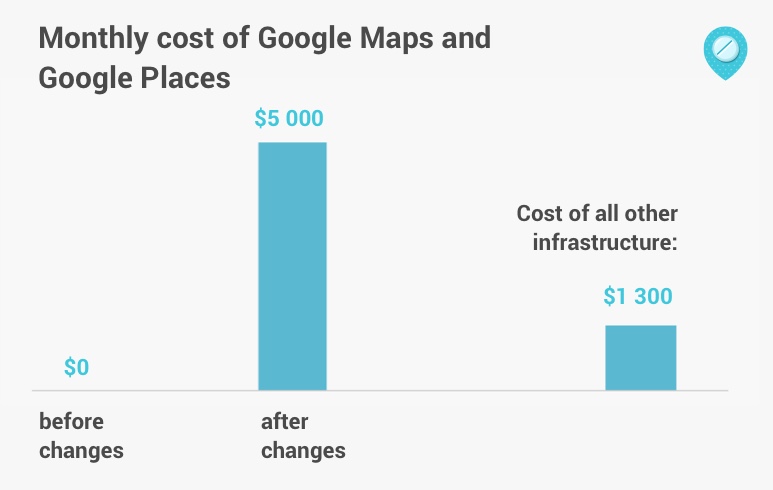
Asus stopped online retailers lowering prices in Europe from 2011-2014: now it’s been fined €63m. Photo by Rodrigo Bastos on Flickr.
You can sign up to receive each day’s Start Up post by email. You’ll need to click a confirmation link, so no spam.
OK, so this is the last instalment for a couple of weeks. See you in August!
A selection of 10 links for you. Use them wisely. I’m @charlesarthur on Twitter. Observations and links welcome.
A global guide to state-sponsored trolling • Bloomberg
»
In Venezuela, prospective trolls sign up for Twitter and Instagram accounts at government-sanctioned kiosks in town squares and are rewarded for their participation with access to scarce food coupons, according to Venezuelan researcher Marianne Diaz of the group @DerechosDigitales. A self-described former troll in India says he was given a half-dozen Facebook accounts and eight cell phones after he joined a 300-person team that worked to intimidate opponents of Prime Minister Narendra Modi. And in Ecuador, contracting documents detail government payments to a public relations company that set up and ran a troll farm used to harass political opponents.
Many of those findings are contained in a report released this week by a global group of researchers that uncovered evidence of state-sponsored trolling in seven countries, and Bloomberg reporters documented additional examples in several others. The report is by the Institute for the Future, a non-partisan, foresight research and public policy group based in Palo Alto, California.
“These campaigns can take on the scale and speed of the modern internet,” the report said. “States are using the same tools they once perceived as a threat to deploy information technology as a means for power consolidation and social control, fueling disinformation operations and disseminating government propaganda at a greater scale than ever before.”
Almost two years in the making, the report grew out of an earlier project commissioned by Google but never published. Researchers for the company’s Jigsaw division, its technology incubator, documented vicious harassment campaigns that were intended to appear spontaneous but in fact had links to various governments. These campaigns often operate “under a high degree of centralized coordination and deploy bots and centrally-managed social media accounts designed to overwhelm victims and drown out their dissent,” according to an unpublished copy of the Google report obtained through an outside researcher.
«
Social media considered… harmful?
link to this extract
UK university domains spoofed in massive fraud campaign targeting suppliers • HOTforSecurity
»
As Action Fraud explains, the criminals are using the bogus email addresses to commit distribution fraud.
Distribution fraud is where criminals make an order to a supplying company (often overseas) via email, posing as a well-known organisation. The ploy is often convincing because they will use an email address that looks similar to the genuine organisation and steal their branding.
Action Fraud says that in the current case, fraudsters are registering domains that are similar to genuine university domains such as xxxxacu-uk.org, xxxxuk-ac.org and xxxacu.co.uk.
Placing orders for a large quantity of expensive products (such as food, pharmaceuticals, or IT equipment), the fraudsters will avoid payment in advance by using faked purchase orders, bank transfer confirmation documentation, or by giving the organisation’s real address for invoicing.
However, the criminals ask for the delivery to be made to an address that does not belong to the spoofed organisation, or in some cases will contact the delivery driver en route to give them a new delivery address.
«
And why now? Because universities aren’t in term time, and so there’s less oversight of what’s going on.
link to this extract
14 million Americans are drinking carcinogen-polluted tap water • Fast Company
»
The drinking water of some 14 million Americans is contaminated with a cancer-causing industrial solvent called Trichloroethylene, or TCE, according to a new EWG analysis of tests from public utilities nationwide. EWG’s Tap Water Database, which aggregates test results from utilities nationwide, shows that in about half of the systems it monitors, average annual levels of TCE were above what some health authorities say is safe for infants and developing fetuses.
More than 400 of the government’s Superfund sites have TCE contamination that can spread into groundwater and threaten drinking water supplies. Drinking TCE-contaminated water has been linked to birth defects, hormone disruption, increased risk of cancer, and more. The EPA’s legal limit for TCE in drinking water is 5 parts per billion. That limit was set back in 1987, and researchers believe TCE could be harmful at much lower levels.
TCE pollution is not new. In fact, in 1995, it was made famous thanks to Jonathan Harr’s nonfiction best-seller A Civil Action, which not only won the National Book Award, but also got John Travolta to star in the film version of it. That book (and film) followed a 1980s case of TCE pollution in Massachusetts that may have caused leukemia in children exposed to the toxic chemical in their drinking supply. Even with the case, and Travolta’s star power, TCE pollution hasn’t been a sexy hot-button issue for years. That could—and should—all change.
«
Wonderful!
link to this extract
WhatsApp balks at India’s demand to break encryption • VentureBeat
»
As WhatsApp scrambles to figure out technology solutions to address some of the problems its service has inadvertently caused in developing markets, India’s government has proposed one of its own: bring traceability to the platform so false information can be traced to its source. But WhatsApp indicated to VentureBeat over the weekend that complying with that request would undermine the service’s core value of protecting user privacy.
“We remain deeply committed to people’s privacy and security, which is why we will continue to maintain end-to-end encryption for all of our users,” the company said.
The request for traceability, which came from India’s Ministry of Electronics & IT last week, was more than a suggestion. The Ministry said Facebook-owned WhatsApp would face legal actions if it failed to deliver.
“There is a need for bringing in traceability and accountability when a provocative/inflammatory message is detected and a request is made by law enforcement agencies,” the government said Friday. “When rumours and fake news get propagated by mischief mongers, the medium used for such propagation cannot evade responsibility and accountability. If they remain mute spectators they are liable to be treated as abettors and thereafter face consequent legal action,” it added.
India is WhatsApp’s largest market, with more than 250 million users.
«
Nice try, India. It’s the same swerve that Pakistan tried to pull on BlackBerry (that’s in 2015; it tried the same in 2011) but it doesn’t wash nowadays when E2E encryption is utterly commonplace.
Fake news is a problem – no doubt – but it’s a problem about humans, not the machines they use.
link to this extract
Supervisors move to ban workplace cafeterias • The San Francisco Examiner
»
New city tech workers dreaming of dining in workplace cafeterias may soon face a harsh reality — going outside.
Two city legislators on Tuesday are expected to announce legislation banning on-site workplace cafeterias in an effort to promote and support local restaurants.
The measure, proposed by Supervisor Ahsha Safai and co-sponsored by Supervisor Aaron Peskin, would adjust zoning laws to ban workplace cafeterias moving forward, but would not be retroactive.
Peskin said the measure, similar to one was inspired by tech companies like Twitter and Airbnb, which are widely known to have access to dining in their own buildings, depriving nearby restaurants of the dollars usually spent by nearby workers. The measure has the support of Gwyneth Borden, executive director of the Golden Gate Restaurant Association and other local merchants.
Under the legislation which is expected to be introduced Tuesday, “you can’t have an industrial kitchen in your office building,” Peskin said.
Peskin said the legislation sought to avoid the “Amazon effect that impacts retail and restaurants across the county,” he said. “This is forward thinking legislation.”
San Francisco is not the first city to implement such a measure. Mountain View, home to Google’s headquarters, has prohibited the company from fully subsidizing employee meals at new office locations, in an effort to encourage employees to engage with the community and local businesses, the San Francisco Chronicle has reported.
Peskn said the measure was purposefully made not retroactive “so it’s not goring anybody’s ox.”
«
This probably isn’t going to end well.
link to this extract
Apple seemingly unable to recover data from 2018 MacBook Pro with Touch Bar when logic board fails • Mac Rumors
»
Last week, iFixit completed a teardown of the 2018 MacBook Pro, discovering that Apple has removed the data recovery connector from the logic board on both 13-inch and 15-inch models with the Touch Bar, suggesting that the Customer Data Migration Tool can no longer be connected.
MacRumors contacted multiple reliable sources at Apple Authorized Service Providers to learn more, and based on the information we obtained, it does appear that the tool is incompatible with 2018 MacBook Pro with Touch Bar models.
Multiple sources claim that data cannot be recovered if the logic board has failed on a 2018 MacBook Pro. If the notebook is still functioning, data can be transferred to another Mac by booting the system in Target Disk Mode, and using Migration Assistant, which is the standard process that relies on Thunderbolt 3 ports.
The data recovery port was likely removed because 2018 MacBook Pro models feature Apple’s custom T2 chip, which provides hardware encryption for the SSD storage, like the iMac Pro, our sources said.
Apple’s internal 2018 MacBook Pro Service Readiness Guide, obtained by MacRumors, advises technicians to encourage customers to back up to Time Machine frequently, and we highly recommend following this advice, as it now appears to be the only way to preserve your data in the rare event your MacBook Pro fails.
«
A few years ago this would have seemed disastrous. Now, you assume that everyone keeps stuff in the cloud – or if it’s too big for that, backs it up locally to a gargantuan cheap drive. I don’t think this is a dramatic failing; as Rossignol hints, it’s probably more in the way of a security element.
In other MacBook Pro news: Apple says it found a “missing digital key in the firmware” which was making the new MBPs run less effectively under heavy load. (As mentioned previously.) There’s a software update which fixes it. So there you go.
European Commission Antitrust fines four consumer electronics manufacturers for fixing online resale prices • EC
»
Asus, Denon & Marantz, Philips and Pioneer engaged in so called “fixed or minimum resale price maintenance (RPM)” by restricting the ability of their online retailers to set their own retail prices for widely used consumer electronics products such as kitchen appliances, notebooks and hi-fi products.
The four manufacturers intervened particularly with online retailers, who offered their products at low prices. If those retailers did not follow the prices requested by manufacturers, they faced threats or sanctions such as blocking of supplies. Many, including the biggest online retailers, use pricing algorithms which automatically adapt retail prices to those of competitors. In this way, the pricing restrictions imposed on low pricing online retailers typically had a broader impact on overall online prices for the respective consumer electronics products.
Moreover, the use of sophisticated monitoring tools allowed the manufacturers to effectively track resale price setting in the distribution network and to intervene swiftly in case of price decreases.
The price interventions limited effective price competition between retailers and led to higher prices with an immediate effect on consumers.
In particular, Asus, headquartered in Taiwan, monitored the resale price of retailers for certain computer hardware and electronics products such as notebooks and displays. The conduct of Asus related to two Member States (Germany and France) and took place between 2011 and 2014. Asus intervened with retailers selling those products below the resale prices recommended by Asus and requested price increases.
«
Total fines: €111m, the biggest (€63m) going against Asus. I wonder if the US FTC has seen similar activity? Also: seven years to reach this stage from the start of the activity. Is that good?
link to this extract
Yup, the Galaxy Note 9 will be really expensive • BGR
»
It was only the other day that we showed you a Galaxy Note 9 leak from Europe that said the phone might cost €1,029 (128GB) and €1,279 (512GB), making the new Samsung flagship the most expensive handset in Samsung’s history. That’s $1,204 and $1,497 at current rates, although you shouldn’t expect a direct conversion for the US price of the handset.
A second report from the region indicates the price leak is accurate, providing an even higher entry price for the handset.
Yesterday’s report from Italian site Tutto Android said these leaked prices might increase by the time the phone is released next month. German blog WinFuture, an accurate source in the past, offers a similar pricing structure.
The site says the Galaxy Note 9 will be available in 128GB and 512GB storage options, which is certainly an improvement over previous models. The cheaper model will sell for €1,050 ($1,229), while the 512GB version will cost €1,250 ($1,463).
«
At this point, though carefully dripped-out leaks, pretty much everything is known about the Galaxy Note 9 – the price, shape, colours of the device – apart from what colour the pen will be. Even so, it feels like this will test the willingness of its customers to pay for that top-end feel.
link to this extract
Boobs, muscles & fairy wings: everything i know about how humans design their avatar selves • Hunter Walk
»
It was a combination of early career anxiety and actual startup struggles which combined to make my years working on Second Life personally stressful. I remember my parents visiting our office and casting a sideways glance at the bottles of Mylanta and hard alcohol sitting side by side on my desk, like the cartoon angel and devil characters sitting on the shoulders of an 80s movie character wrestling with his conscience. With some hindsight perspective though, the tremendous benefits of the experience became clear – I had the opportunity to work on a thoughtful, innovative product with an amazing technical team and together we produced what is ultimately an ongoing, profitable company (even if it failed to achieve its full potential).
Besides the meta-learnings about how startups function, there were a [NeesonVoice] very particular set of skills [/NeesonVoice] that I took away from my years at Linden Lab. The other day a young entrepreneur – she was in diapers when we started Second Life – asked me about avatars and specifically the design decisions we made about how people could represent themselves in our virtual world. It was so much fun reminiscing about what we observed that I wanted to document some stuff here.
«
The point about how teens choose to appear is particularly interesting.
link to this extract
Xiaomi expansion into South Korea heaping pressure on Samsung • Digitimes
»
China-based Xiaomi launched its latest smartphones including the flagship Hongmi Note 5, in Seoul, South Korea, priced KRW200,000-300,000 (US$190-285), in cooperation with local telecom carriers SK Telecom and Korea Telecom. Their competitive pricing of less than US$300, far below Korea-based vendors’ smartphone ASP of over US$500 in 2017, has quickly caught much attention in the Korea market.
Xiaomi’s operating profits have always been below 5%, but the slim-profit strategy is also the China-based smartphone vendor’s strongest weapon in its foray into new territories. Xiaomi has already outraced Samsung Electronics in India’s smartphone market and is now looking to challenge the Korea giant on its home turf.
Currently, Samsung is the largest smartphone vendor in South Korea with a 55% share, followed by Apple at 28.3% and LG Electronics at 15.7%. The three handset vendors together already account for 99% of the market, leaving almost no room for any other players.
To nudge its way through the barriers, Xiaomi has introduced Hongmi Note 5, featuring a 5.99-inch screen, 12-megapixel back-end and 5-megapixel front-end cameras, and artificial intelligence (AI) support, priced at KRW299,000; it has been a star in Xiaomi’s winning lineup for the race in India. Although Xiaomi has not revealed the number of its smartphone pre-orders from South Korea, sources from local channels have reported positive feedbacks from consumers.
«
Which demonstrates that substitution – cheaper as-good hardware for another – is a continual risk for Android handset makers, even in their own back yard. That Apple has such a huge share – comparable with the UK (as is the size of the South Korean smartphone market) – is remarkable, though.
link to this extract
Errata, corrigenda and ai no corrida: none notified















